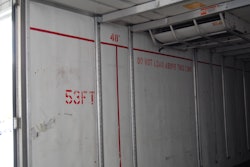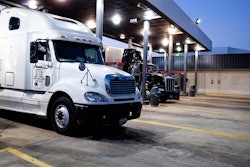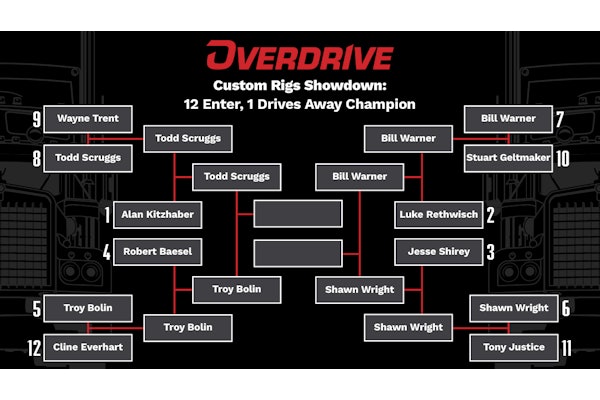It's no secret that 2023 has laid out a hard road for many in trucking, with large fleets in both Q1 and Q2 reporting collapsing revenues and profits, but one mega fleet CEO recently expressed surprise at just how well small and medium fleets have held up.
“We underestimated the cash pile that small, medium-size carriers had built up over COVID and have allowed them to survive longer than we thought they’d be able to,” Werner CEO Derek Leathers said at Deutsche Bank’s recent transportation conference.
Here Leathers gets to one of the key questions in today's trucking market: Following a sharp rise in fuel and drop in rates and predictions of a "trucking bloodbath," why hasn't a huge amount of capacity washed out of the market yet?
The American Trucking Associations still stands behind its "driver shortage" assertion, though it marked numbers down from an estimated 80,000 unfilled roles to 78,000 last October, with an expectation of further declines in that figure this year. ATA did not respond to repeated requests from Overdrive to answer the simple question: Is there still a driver shortage? With big fleets like Knight-Swift closing many locations of their CDL school and drivers reporting a slowdown in fleet recruiting, no matter what the ATA says, the industry's actions point toward excess capacity, not a shortage.

By April 2022, spot rates had really started to fall from pandemic highs of around $4/mile and following Russia's invasion of Ukraine, diesel soared above $5/gallon, $6 and $7 in some areas. At that point, the FMCSA had granted an estimated 130,000 new trucking authorities since the dawn of the pandemic.
Dry van spot rates have hung now for months around $2/mile, and have followed past seasonal patterns by ticking down through the summer. DAT Freight & Analytics reported volumes last week were down 16.6% from the prior week and the volume represented the lowest non-holiday week for load posts in three years -- since the first week of May 2020, to be exact, when much of the country remained on COVID lockdown.
That’s down 52% compared to the same week last year.
Leathers indicated that a lot of those new trucking businesses had fallen off.
"FMCSA carrier data reports DOT net truck deactivations for 44 consecutive weeks and now exceeds 110,000 net deactivations over that period," he said in the company's Q2 earnings call.
Of course, many of those trucking authorities were single truck owner-ops, and many likely didn't just disappear, but rather leased on with another carrier or parked or sold the truck and took work as a company driver, as the case may be. Another unknown number of revoked authorities may frankly have been fake carriers set up for the purpose of double brokering, as contributor and small fleet manager Matthew Patrick's has demonstrated.
[Related: The double brokering slow burn -- how it happens, and how to fight back against it]
Still, the number of active truckers remains high relative to demand, and Leathers said he "underestimated small carriers' resiliency," adding at the conference that he believed small carriers showed they could "survive below their operating costs" for a surprising amount of time.
Overdrive's Small Fleet Championship entrants and Trucker of the Year contenders this year certainly exemplify small operations that buck the trend, if it is a trend. (Stay tuned for announcement of this year's small-fleet semi-finalists in the coming weeks.)
To his credit, Leathers also offered another explanation: Owner-operators and smaller fleets stand up well to pressure.
"At this point, we believe smaller carriers have been supported by cash reserves generated from the peak 2022 freight market, federal stimulus and lower fuel cost," he said on the earnings call. But that badge of honor may have its days numbered, he added. "Accelerated truck capacity attrition seems more imminent as cash reserves reach a point of depletion. And we believe even in a gradually improving freight environment that it is unlikely for those carriers to re-enter the market given much higher financing costs and other factors."
In the end, all the predictions of doom and gloom for owner-operators and smaller fleets must contend with the ability of savvy business owners to weather downturns, to land direct freight, to specialize in niches where they're valued and well-compensated. The best of the best know their costs backward and forward, of course, do everything within their power to rein them in, and certainly take them into account before accepting any load that would come in "below their operating costs," as Leathers put it.
As for Werner, it's also important to keep in mind: The company itself saw profitability drop by 37% last quarter. That's right. Big fleets are in no way immune to the pressures of a down freight market.
[Related: Direct freight: Delivering a modicum of consistency in a turbulent market]










